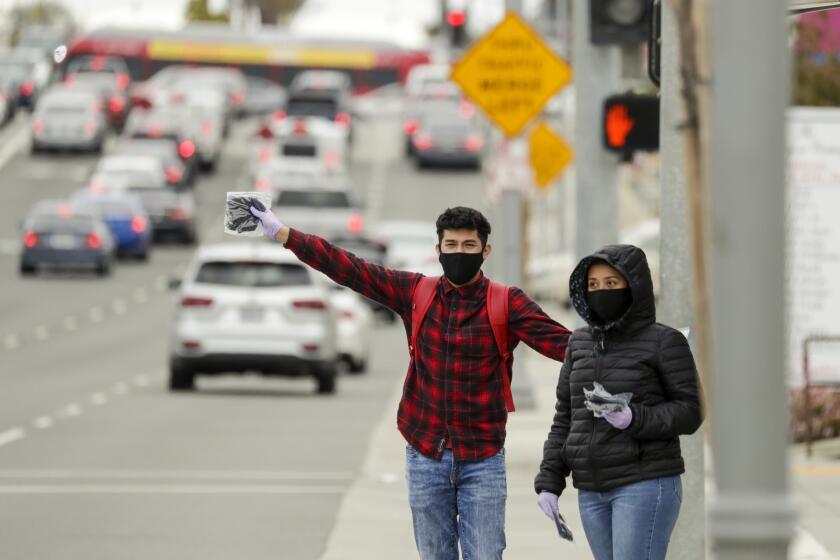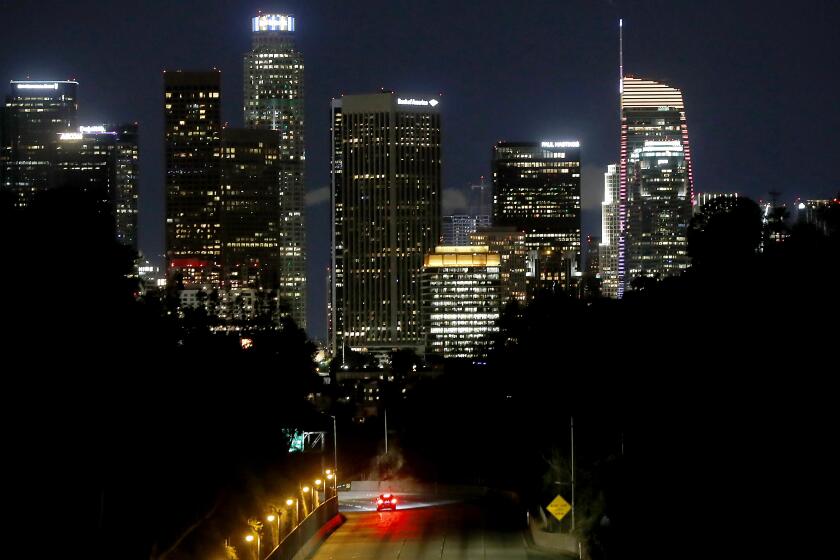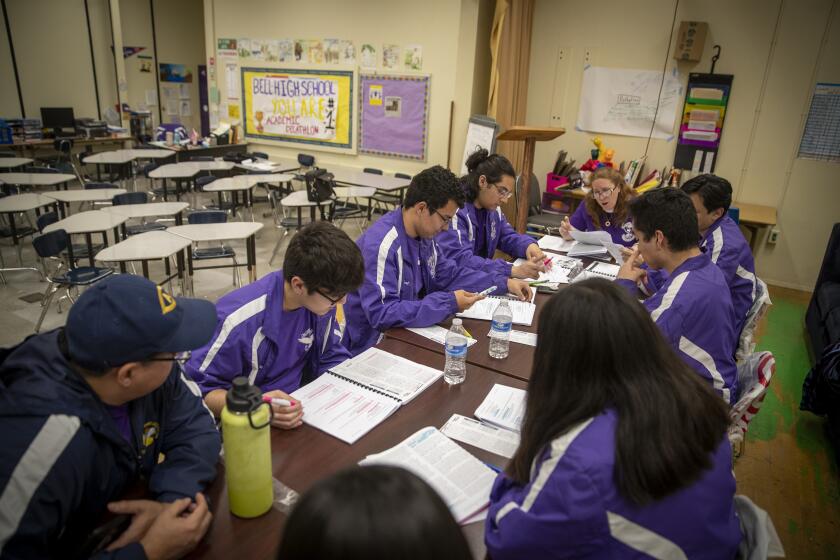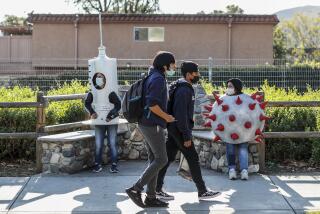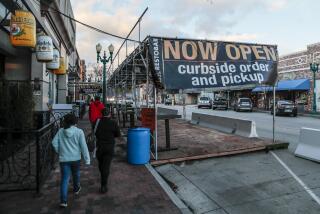No California ‘victory lap’: Lifting stay-at-home rules too soon would be disastrous, officials say
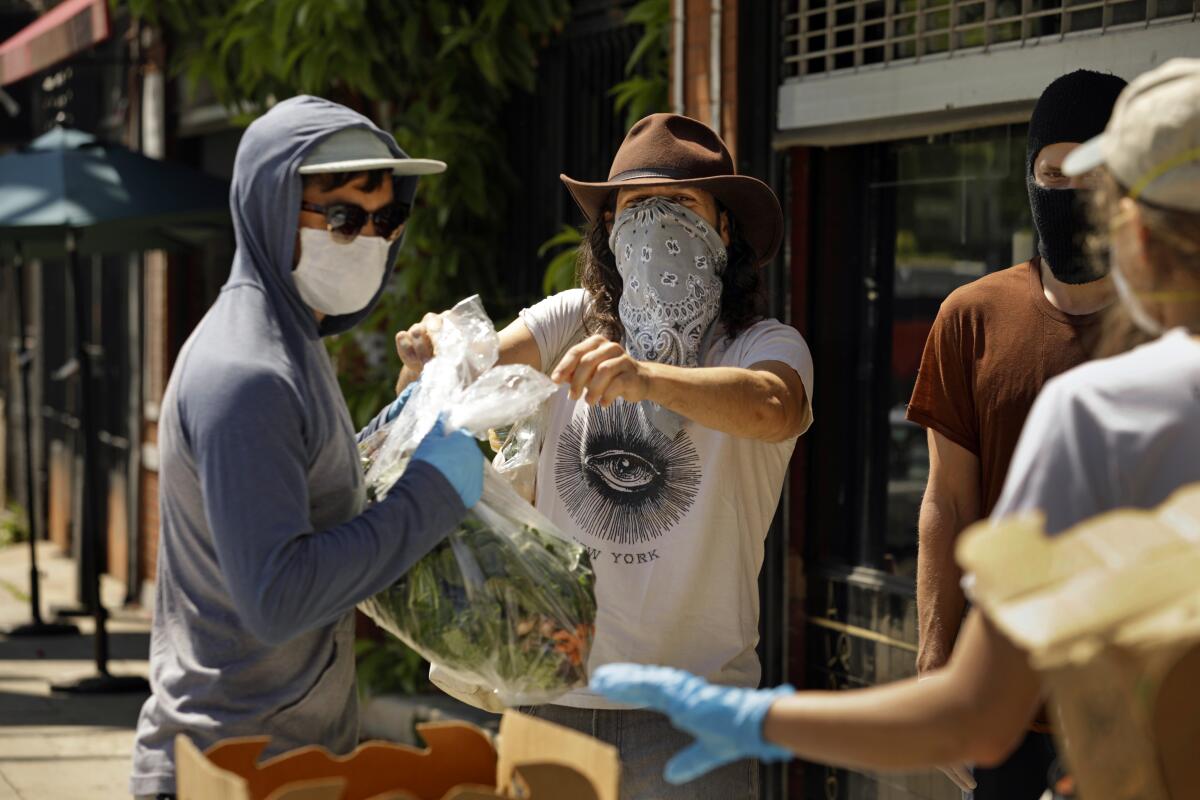
SAN FRANCISCO — Gov. Gavin Newsom offered his take Tuesday on how stay-at-home orders would be eased across the state, but California’s governor wasn’t alone in issuing those orders. Local health officers also have extraordinary powers to issue wide-ranging shelter-in-place orders for each of the state’s 58 counties.
This week, a number of local health officers across California voiced agreement with the governor: Now is not the time to loosen up the coronavirus stay-at-home orders.
It could be sometime in May before state and local officials begin to seriously contemplate how they might start to gradually ease the stay-at-home order.
“This is not the end, and it’s not even the beginning of the end, but perhaps the end of the beginning,” Anna Roth, director of Contra Costa Health Services, said Tuesday, quoting Winston Churchill’s comments after a victory in World War II in 1942. “Now is not the time for us to take a victory lap.”
But Dr. Chris Farnitano, Contra Costa County’s health officer, went further. “It’s not even the end of the beginning. It’s still the beginning of the beginning in this crisis,” Farnitano told the county Board of Supervisors. “If we do not continue our efforts to really reduce the spread within our community by our social-distancing and staying-at-home efforts ... we are still at risk of facing a surge that could overwhelm our hospitals.”
California’s hospitals have not been stretched to limit, as medical facilities have been in New York. By Tuesday night, California had reported more than 700 deaths; New York state, meanwhile, has reported more than 10,000.
But the number of hospitalized COVID-19 patients has continued to climb in California, from about 1,600 on March 31 to about 3,100 on Tuesday. The number of people in California’s intensive care units with confirmed coronavirus infections also has risen from about 650 on March 31 to nearly 1,200 on Tuesday, although it’s possible the number of people in ICU beds has started to show signs of flattening.
But experts say what California needs to see is a sustained drop in the numbers of new cases. That may not happen until around the end of May, or perhaps mid-June, said Dr. Robert Kim-Farley, a UCLA medical epidemiologist and infectious diseases expert.
So far, the number of new cases is continuing to increase. Los Angeles County recorded 595 new cases Tuesday, the fourth highest daily total so far, after a momentary dip in the past week.
There were also 40 new fatalities reported Tuesday, the highest daily death total for L.A. County.
Just last week, L.A. County Public Health Director Barbara Ferrer ordered an extension of stay-at-home restrictions until May 15. Added to the order: a requirement, starting Wednesday, that people shopping and working at essential businesses wear cloth face coverings. She warned last week it might be summertime before officials look at relaxing elements of the stay-at-home order.
“We are not yet on the other side of this pandemic,” Ferrer said Tuesday.
In Silicon Valley, the original epicenter of the coronavirus outbreak in California, officials had reason for cautious optimism, with the number of confirmed COVID-19 cases stabilizing at about 50 to 100 additional cases daily, said Dr. Sara Cody, health officer for Santa Clara County.
A UCLA medical epidemiologist and infectious disease expert discusses a possible timeline for reopening California after the coronavirus shutdown.
Deaths are still increasing, but slowly, she added. As of Monday, Santa Clara County had reported 1,666 cases and 60 deaths.
“However, I want to emphasize that we are by no means out of the woods,” Cody said at a news conference Tuesday. “We’re still probably at the beginning of what is going to be a very long marathon.”
The goals the county needs to meet to ease restrictions are similar to those Newsom outlined Tuesday: robust hospital capacity to handle possible surges in the number of new patients; a stockpile of personal protective equipment, including masks, gowns and gloves; improved testing capacity; and added staff to investigate new cases to isolate newly infected patients and find those who have been exposed to the virus and quarantine them.
“We do not want to slip back. ... We’ve settled things down. We need to settle things down more,” Cody said. “If we just lifted the shelter-in-place and went about our business, we’d be right back where we were.”
There were signs of increasing optimism that it’s possible California may be spared a feared surge of patients.
After the coronavirus pandemic cools down, how will California start getting back to normal? Slowly, methodically and in stages.
“We [may be] already starting to get to a steady state with the number of cases and the number of hospitalizations starting to level off,” said Farnitano, the Contra Costa County health officer, “which would be a credit to all the social distancing efforts we’ve done.”
In Ventura County, one model suggested a surge in cases was coming next week. But the public health officer, Dr. Robert Levin, said the optimistic part of him “thinks we may continue along this flat line that we’ve been on for a bit.”
Just two weeks ago, Levin warned Ventura County could see as many as 1,000 deaths from the coronavirus outbreak, although he added Tuesday he had thought more realistically it would be around 250. By Tuesday night, there were 13 deaths.
“I think that has a lot to do with how hard everyone in our county has worked at ... maintaining social distancing,” Levin said at a Ventura County Board of Supervisors meeting.
School won’t be the same when it resumes after coronavirus closures. There could be staggered start times, reconfigured classes and no assemblies.
Still, he said, the stay-at-home order would likely be in place for a while longer. “We want to see a reduction in cases for 14 days. We want hospitals to be able to treat all patients without needing their surge beds. We would like to see the ability to test all people with what could be COVID-19 symptoms.”
The San Mateo County health officer, Dr. Scott Morrow, credited “extraordinary adherence” to the shelter-in-place order, implemented in the San Francisco Bay Area on March 16 — and issued three days ahead of the statewide order — with lowering the pace of new infections.
“There is no perfect adherence, by any means, but it seems to be the major reason for lowering the rate of new infections to a stable level,” Morrow said in a statement released Monday. “The adherence has been so good, in fact, the models we’re using to predict our future state don’t seem to be able to account for this fact. It appears that we have flattened the curve, at least this first curve, for now.”
At least 17 of California’s 58 counties issued stay-at-home orders before Newsom issued his statewide order.
State and local officials say they’re acutely aware of the intense economic pain the stay-at-home orders are causing. Mounting jobless claims point to an unemployment rate in April of 15% or even higher, a tsunami-like economic hit not seen since the Great Depression of the 1930s, when 1 in 4 workers were jobless.
“Where we are now with the stay-at-home orders, they simply can’t be sustained,” Dr. Sonia Angell, state health officer, said Tuesday.
But to get beyond the existing stay-at-home order, Newsom says, he wants to see the numbers of people hospitalized and in intensive care units start to decline. He also wants to make sure testing is increased, and hospital capacity is expanded.
For those wanting a timeline, he said, ask him again in two weeks, during the first week of May.
“Ask me the question then and we will be in a very different place, where we can be more prescriptive on giving people timelines,” Newsom said Tuesday. “I know you want the timeline. But we can’t get ahead of ourselves. ... Let’s not make the mistake of pulling the plug too early.”
More to Read
Sign up for Essential California
The most important California stories and recommendations in your inbox every morning.
You may occasionally receive promotional content from the Los Angeles Times.
